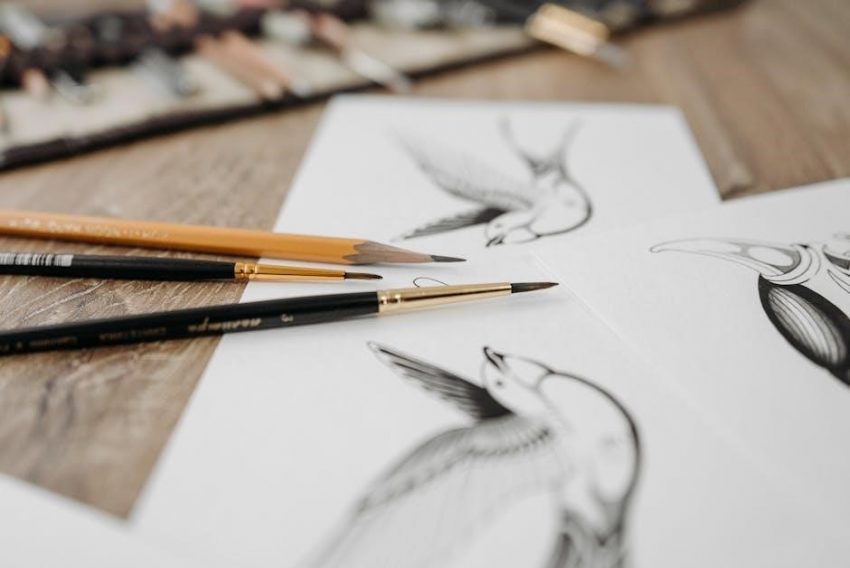Understanding bird anatomy is crucial for drawing. Learn structure, proportions, feather functions, and how they aid flight and insulation. The guide simplifies complexity into basic forms for artists.
1.1 Understanding Bird Structure and Proportions
Mastering bird structure and proportions is essential for accurate drawing. Birds’ bodies are optimized for flight, with lightweight skeletons and powerful muscles. Understanding these elements helps capture their shape and movement. Start by breaking birds into basic forms: circles for heads, ovals for bodies, and triangles for wings. Pay attention to how proportions vary across species, such as the length of tails or beaks. Laws’ guide emphasizes observing these details to ensure realistic depictions. By simplifying complex anatomy, artists can focus on the essence of a bird’s form, enabling precise and expressive sketches. This approach transforms complexity into manageable, artistic elements.
1.2 The Importance of Feathers in Bird Drawing
Feathers are a defining feature of birds, essential for flight, insulation, and display. In drawing, capturing their texture, shape, and arrangement is vital. Laws’ guide highlights how feathers vary in structure, from stiff flight feathers to soft down. Understanding these differences helps artists convey a bird’s identity and movement. Feathers also play a key role in expressing behavior, such as courtship displays or aggression. By mastering feather details, artists can add depth and realism to their work. The guide provides techniques to suggest feather texture without overwhelming the drawing, ensuring balance between detail and simplicity for a lifelike representation.
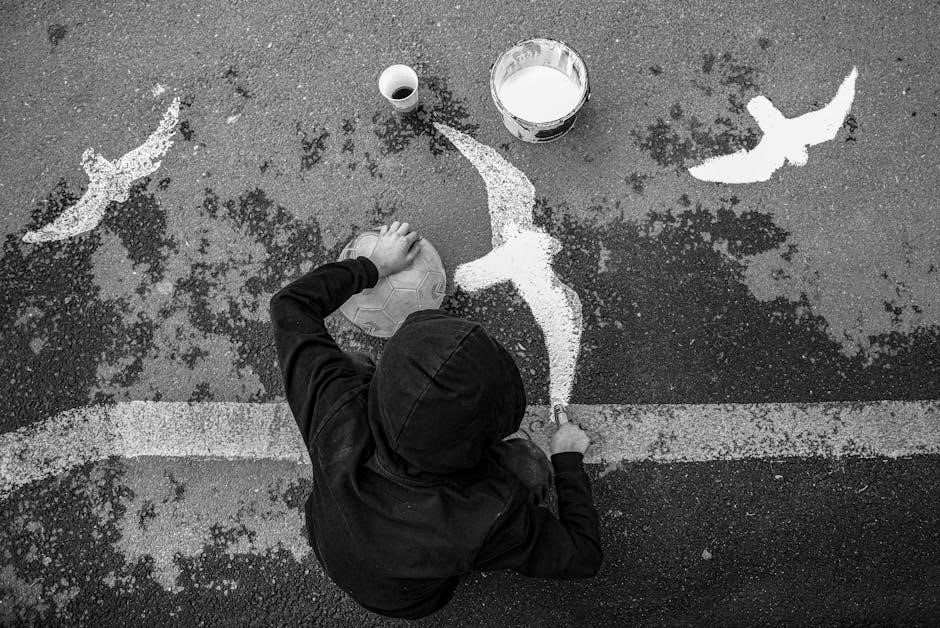
Basic Sketching Techniques
Start with light sketch lines to capture posture, proportions, and angles. This foundational technique helps build accurate, dynamic bird drawings, ensuring realistic forms and movements are achieved.
2.1 Starting with Gesture Drawings
Gesture drawings are quick sketches that capture the overall pose and movement of a bird. Using light, fluid lines, artists focus on the bird’s posture, proportions, and angles. This technique helps develop observation skills and ensures dynamic, lifelike compositions. By simplifying the subject into its core forms, gesture drawings provide a solid foundation for detailed work. Laws emphasizes the importance of this step to accurately portray a bird’s structure and energy before refining details like feathers or beaks. Regular practice enhances the ability to quickly and confidently sketch birds in various poses, making it an essential skill for capturing their natural behavior and grace.
2.2 Capturing Posture, Proportions, and Angles
Capturing posture, proportions, and angles is essential for creating accurate and lifelike bird drawings. Understanding the relationship between body parts, such as the head, torso, and tail, helps artists depict birds realistically. Laws emphasizes the importance of observing how these elements align to convey movement and balance. By focusing on angles, such as the tilt of the head or the bend of the wings, artists can express the bird’s mood and activity. Using simple shapes to break down the bird’s form ensures proportional accuracy. Practice sketching these elements to master the foundation of bird drawing, as proper proportions and angles bring the subject to life.
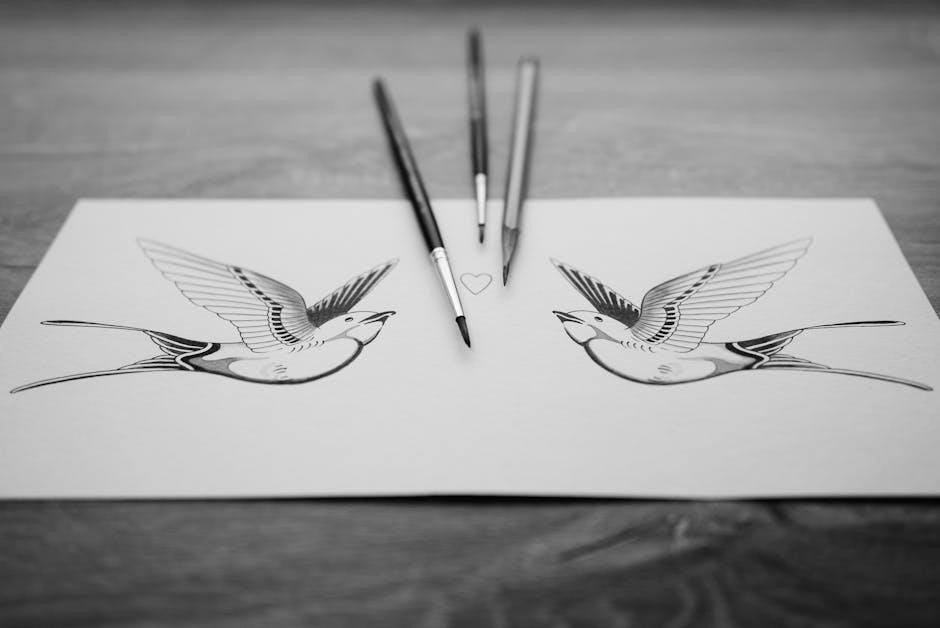
Advanced Drawing Techniques
Master advanced techniques like shading, texture, and detailed feather structures to add depth and realism. Explore beak shapes and leg forms for precise bird illustrations.
3.1 Mastering Shading and Texture
Shading and texture are essential for adding depth and realism to bird drawings. Learn to use shading to create dimension, highlighting the contours of feathers and form. Understand how light interacts with plumage to achieve lifelike results. Texture techniques, such as hatching and stippling, help capture the softness of down feathers or the glossy smoothness of flight feathers. Practice layering strokes to mimic the intricate patterns of bird feathers, ensuring each detail enhances the overall structure. By mastering these elements, you can bring your bird drawings to life, conveying both the beauty and complexity of their anatomy.
3.2 Drawing Bird Beaks and Legs
Drawing bird beaks and legs requires precision and attention to detail. Beaks vary in shape and size, reflecting their function, such as eating, preening, or catching prey. Legs, though small, are crucial for balance and movement. Start by sketching the basic forms, ensuring proper proportions. Pay attention to the curvature of the beak and the joint structure of the legs. Use reference images to capture the unique characteristics of different species. Practice shading to highlight textures, such as the smoothness of the beak or the scaly patterns on legs. Accurate rendering of these features enhances the overall authenticity of your bird drawings.
Capturing Bird Behavior and Movement
Capture bird behavior through gesture sketches, focusing on posture, angles, and movement. Observe flight patterns and perching poses to convey life and energy accurately in your drawings.
4.1 Observing and Sketching Bird Postures
Observing bird postures is key to capturing their behavior. Start with light sketches to record gestures, movements, and angles. Focus on how birds hold their bodies, whether perched, flying, or foraging. Posture reveals their mood and activity, so note the tilt of the head, stance, and tail position. Simplify complex poses into basic shapes to ensure proportion and balance. Practice quick sketches to freeze moments in time, then refine details. This approach helps convey the essence of their behavior and energy. Laws emphasizes the importance of posture in storytelling, making it a vital element in drawing birds convincingly.
4.2 Drawing Birds in Flight
Drawing birds in flight requires capturing their dynamic movement and grace. Start with gesture sketches to convey motion, using fluid lines for wings and body positioning. Simplify the bird’s form into basic shapes, focusing on the angle of wings and tail to suggest flight direction. Light, quick strokes help depict feathers in motion. Observe how wings bend and feathers ruffle to show effort or glide. Practice drawing from life or photos, noting the differences in flight styles among species. Laws’ guide provides exercises to refine these techniques, ensuring your drawings reflect the energy and beauty of birds in motion.

The Role of Color and Texture
Color and texture are essential for depicting bird species. They highlight unique feather patterns, beak details, and plumage, making each bird identifiable. Mastering these elements enhances drawing accuracy and vibrancy.
5.1 Using Color to Depict Bird Species
Color plays a vital role in identifying bird species, as each has unique feather patterns and hues. The guide emphasizes how to use color to capture these distinct traits, ensuring accuracy in depiction. It teaches artists to observe and replicate the vibrant plumage, beak colors, and subtle texture variations that define different species. By mastering color techniques, artists can convey the essence of each bird’s identity. The guide also highlights how color reflects behavior, habitat, and evolutionary adaptations, making it a crucial tool for both artistic expression and scientific accuracy in bird drawing.
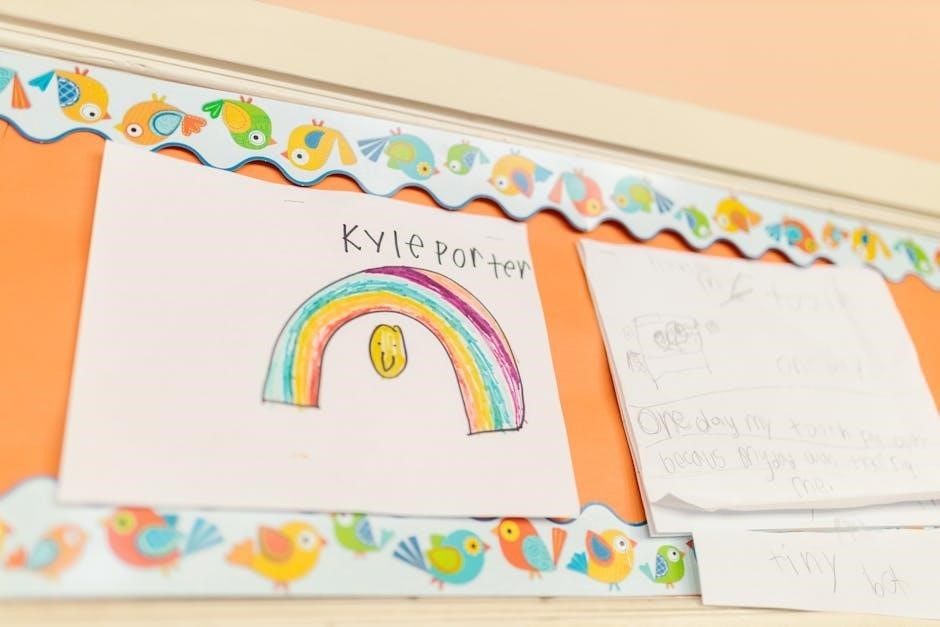
Common Mistakes to Avoid
When drawing birds, common mistakes include overloading details early, misrepresenting proportions, and neglecting posture. Many artists mistakenly focus on feathers without understanding their structure, leading to unrealistic textures. Others overlook the importance of gesture sketches, resulting in stiff, lifeless poses. Incorrect beak and leg proportions are frequent errors, as well as failing to capture the bird’s movement and energy. The guide emphasizes starting with simple forms and gradually adding details, ensuring accuracy and fluidity. Avoiding these pitfalls helps create more dynamic and lifelike bird drawings, whether for beginners or experienced artists striving to refine their skills.
Practice Exercises
Practice exercises are essential for mastering bird drawing. Start with gesture sketches to capture movement and posture. Contour drawing helps refine shape and proportion. Focus on individual features like beaks and legs, ensuring accuracy. Simplify complex plumage into basic forms. Practice shading techniques to convey texture and depth. Regular exercises build confidence and skill, allowing artists to progress from basic to detailed drawings. Laws’ guide provides structured workouts tailored for all skill levels, ensuring steady improvement and a deeper connection to the art of bird drawing.
Case Studies of Bird Drawing
Case studies in The Laws Guide to Drawing Birds provide real-world examples of bird drawing techniques. Detailed analyses of specific species, like hummingbirds and birds of prey, demonstrate how to capture their unique anatomy and behavior. Laws shares step-by-step breakdowns of his own sketches, revealing how he simplifies complex forms into manageable shapes. These studies highlight the importance of observation, proportion, and texture. By examining diverse bird species, artists gain insights into adapting techniques for various subjects. The case studies inspire creativity and technical accuracy, offering a practical roadmap for improving bird drawing skills across all artistic levels.
Troubleshooting Your Bird Drawings
Troubleshooting bird drawings involves identifying common errors and refining techniques. Issues like incorrect proportions, flat posture, or overly detailed feathers can detract from the overall piece. Laws emphasizes the importance of observation and simplification. To fix mistakes, start by revisiting gesture sketches to capture movement and grace. Break the bird into basic shapes, ensuring accuracy in proportions. Pay attention to feather texture and direction, as these convey life and structure. Practice sketching from life or photos to enhance accuracy. By addressing these areas, artists can refine their work, creating more dynamic and realistic bird drawings that reflect their natural beauty and behavior.
Finding Inspiration in Nature
Finding inspiration in nature is a cornerstone of bird drawing. Observing birds in their natural habitats provides unparalleled insights into their behavior, posture, and plumage. Laws encourages artists to spend time outdoors, sketching from life to capture the essence of birds. By studying their movements and interactions, you can infuse your drawings with authenticity and energy. Nature also sparks creativity, offering endless variations in lighting, color, and composition. Embrace the beauty of the natural world as a source of motivation and guidance for your artistic journey. Drawing birds becomes a celebration of their anatomy, behavior, and the ecosystems they inhabit.
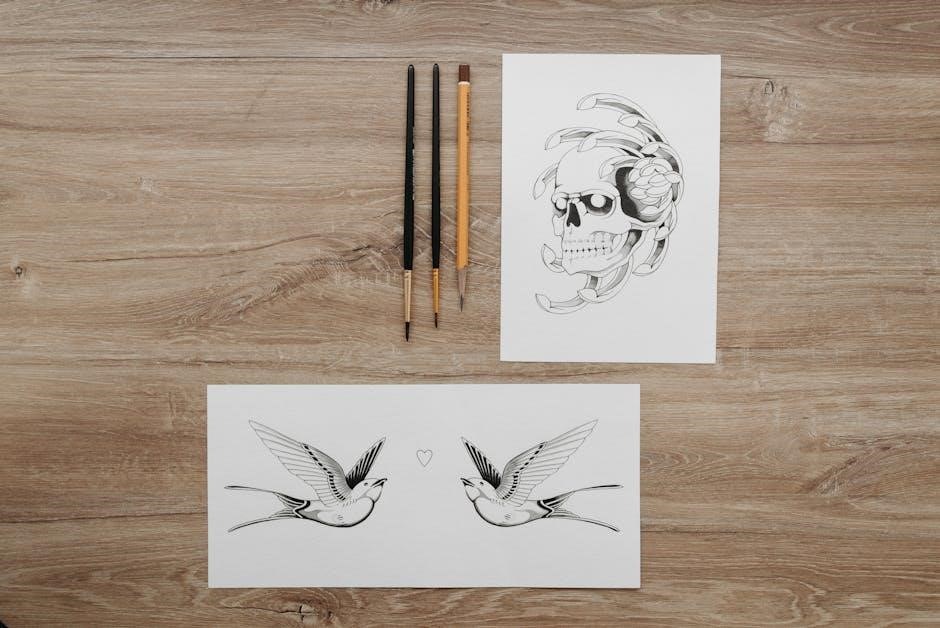
Resources for Further Learning
For deeper exploration, John Muir Laws’ guidebook is a seminal resource, offering detailed techniques and exercises. Online tutorials, workshops, and birding festivals also provide hands-on learning opportunities. Laws’ classes at the Point Reyes Birding and Nature Festival are highly recommended for practical insights. Additionally, books like The Laws Guide to Drawing Birds and field guides by David Sibley offer comprehensive references. Digital platforms and birding communities further enrich learning by sharing tips and showcasing artwork. These resources cater to all skill levels, ensuring continuous growth and refinement in bird drawing, while fostering a deeper connection to nature and its beauty.
